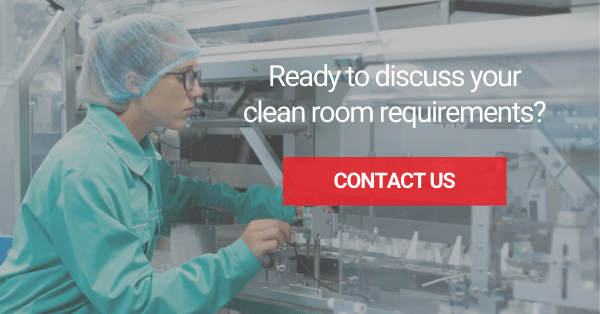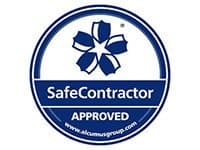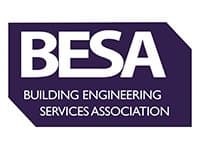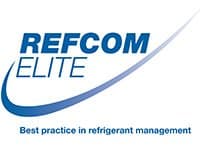Cleanrooms are specialised facilities that are designed to control the size and amount of airborne particles per cubic metre of air. There are a variety of different techniques and equipment used to keep a cleanroom free from contaminants.
These often include specific dress codes for employees, pre-entry air shower cleaning chambers, and highly efficient air filters. One of the most important aspects of ensuring a sterile cleanroom is the airflow within the space.
The movement of air is often carefully designed to pass over and around objects in the room in a uniform and consistent way. By doing this, you can be sure that all the cleanroom surfaces are continuously exposed to a stream of filtered air.
Cleanrooms are essential for a diverse range of scientific research applications, nanoscale manufacturing, and pharmaceutical production. In this guide, we’ll compare the different types of cleanroom airflows to help you decide which type to use in your facility.

What is a Unidirectional Airflow Cleanroom?
This type of cleanroom is specifically designed so that all the clean zones have a constant velocity of air moving over them in a steady stream. The air is only directed to flow in one direction, usually vertically but in some cases horizontally. This laminar airflow is why they’re known as unidirectional cleanrooms.
To facilitate this movement, the air is blown out of the fan filter units and then enters the exhaust duct system. The filtration units are normally suspended from the ceiling. The exhaust system is often made of perforated tiles on a floating floor.
This arrangement forces the air to move uniformly from top to bottom of the cleanroom. The air inlets and outlets are set up in parallel to ensure a laminar movement of air. Due to the consistent direction of airflow, there is very little chance of any contaminants coming into contact with the clean surfaces.
Unidirectional cleanrooms generally use laminar airflow hoods to direct the air in a specific direction. The layout and design of the room are critically important to reduce the possibility of turbulent air. Room layout is also important to avoid any areas with insufficient airflow – commonly known as dead zones.
Laminar air flow hoods are often made out of non-shed materials like stainless steel. These materials do not shed particles and help to maintain a sterile environment.

the air passes through the flow hood, it moves through a high-efficiency particulate filter (HEPA) or ultra-low particulate air filter (ULPA). These remove 99.97% of airborne particles with a diameter of 0.3 microns.
This size diameter includes all the common environmental contaminants such as mould, bacteria, pollen, and dust. Particles with a larger or smaller diameter are trapped in HEPA filters with even greater efficiency. To ensure adequate filtration and airflow, unidirectional cleanrooms need to have 80% to 100% of their ceiling space covered with filters.
What is a Non-Unidirectional Airflow Cleanroom?
As their name suggests, this type of cleanroom works with a general movement of air. Rather than having a laminar flow, the air moves in all directions, and air quality is maintained through circulation and filtration. The filter units can be positioned in one place or spread throughout the room.
Non-unidirectional cleanrooms generally still have a planned route for the air to move through the space. Although, this may include several paths around objects in the room. The airflow follows a complex path with high levels of turbulence to ensure that the air in the room is constantly moving and passing through the filtration system.
Airflow in non-unidirectional cleanrooms often follows a vortex shape as clean air is introduced and mixes with the air already in the room. This clean air dilutes the concentration of airborne particles.
The basic principle behind non-unidirectional cleanrooms is to have sufficient random movement of air. Contaminant particles are filtered out using HEPA filters or other nonspecific filter types. Air quality is maintained by moving enough air through the filters to keep contaminants within the desired range.
What Is a Mixed Cleanroom Airflow?
In some cleanrooms, it may be necessary to use both unidirectional airflow and non-unidirectional airflow. The airflow in these cleanrooms is designed to have a laminar flow around specific work areas or over sensitive materials. These high-priority areas are protected from contaminants by focussing laminar airflow hoods onto them or by using laminar flow cabinets.

Non-unidirectional airflow is used to keep the rest of the air in the cleanroom moving in a random way. This air passes through any number of filters to keep the level of contaminants within limits. The combination of airflows in a mixed cleanroom is suitable for larger spaces that only have certain workstations that require laminar airflow.
Non-Unidirectional Airflow Cleanroom vs. Unidirectional Airflow Cleanroom
Cleanrooms are classified according to the ISO standard of cleanliness. The grading of different standards of air cleanliness is found in ISO document 14644-4. Depending on the class of cleanliness that your facility requires, you will need to use either unidirectional or non-unidirectional airflow.
Non-unidirectional airflow is used for cleanrooms that require a level of cleanliness between ISO class 9 and ISO class 6. The more stringent levels of cleanliness of ISO class 5 and below usually require unidirectional airflow.
Airflow is not the only factor that goes into determining the ISO class rating of a cleanroom. There are a number of other factors that also contribute to the ISO class rating. These include the particle count and size, air change rate, and the percentage of the ceiling covered with filtration units.
What Is the Air Change Rate in a Cleanroom?
Depending on whether you have a unidirectional airflow or a non-unidirectional airflow, you will need to use a different method to calculate the air change within your cleanroom. Let’s look at each type to understand how they differ.
Unidirectional Airflow Testing
This type of cleanroom uses the airflow velocity method to calculate the air change rate. It requires a test instrument to measure the airspeed as it passes through the HEPA/ULPA filter. The speed of the air is measured in either metres per second or feet per minute.
Each class of ISO cleanliness, ranging from 1 to 5, has a specific airflow velocity associated with it. These can be found in Table B2 of the ISO 14644-4 document.

Non-Unidirectional Airflow Testing
Both mixed airflow cleanrooms and non-unidirectional cleanrooms use the airflow volume method to measure the air change rate. This involves using a capture hood to measure the volume of air passing through the HEPA/ULPA filter.
The results are given in litres per second or cubic feet per minute. You then divide this figure by the volume of the room to measure the room change rate per hour. As with unidirectional airflow, the ISO classes 6 to 9 each have a specific rate per hour that can be found in Table B2 of the ISO 14644-4.
Cleanroom Airflow and Pressurisation
Another critical aspect of setting up a cleanroom is deciding whether the airflow should have a positive or negative pressure. This depends on what your application is.
Manufacturing cleanrooms that produce semiconductors or other nanoscale components generally have a positive pressure. Medical laboratories are usually required to have negative pressure cleanrooms.
Positive Pressure Cleanrooms
The whole cleanroom is kept at a slightly higher air pressure than the surrounding air. As a result of this positive pressure, whenever a door opens or if there is a leak in the seal of the room, the clean air will flow out of the cleanroom. The positive pressure prevents any unfiltered air from entering the cleanroom.
When assembling highly sensitive electrical components it may also be necessary to control the humidity within your cleanroom. Humidity control is achieved through the use of equipment like air ionizers.
You need to build these into the HVAC system to control the electrostatic charge in the air. This reduces the risk of static discharge damaging the semiconductor circuitry.

Negative Pressure Cleanrooms
This type of cleanroom is generally used in medical and pharmaceutical applications. The cleanroom is kept at a negative pressure in contrast to the outside air. This pressure differential is maintained by continuously drawing air out of the room with an HVAC system.
If there is any breach in a negative pressure cleanroom, the difference in pressure forces the outside air into the room. They are used in situations where it is vital to contain the air within the cleanroom and only allow air that has passed through the filters to escape the room.
In addition to HEPA/ULPA filters, many negative pressure cleanrooms use ultraviolet lights to further disinfect the air. Laboratories that handle highly contagious viruses and other pathogens use negative pressure cleanrooms to ensure nothing leaks out of the cleanroom.
Are You Looking to Install a Cleanroom?
Designing and installing a cleanroom requires a high level of technical expertise and experience. Choosing the right quality filters, pressure gradient and airflow pattern are vital to maintaining a cleanroom facility at the ISO level of cleanliness required for your application.
At Total Environment Kooling, we have over 20 years of experience designing and installing cleanrooms. We offer turnkey solutions to help you throughout the process of establishing and maintaining your cleanroom.
You can contact us online or call us at +44 (0)117 9523355 to discuss your cleanroom requirements.






